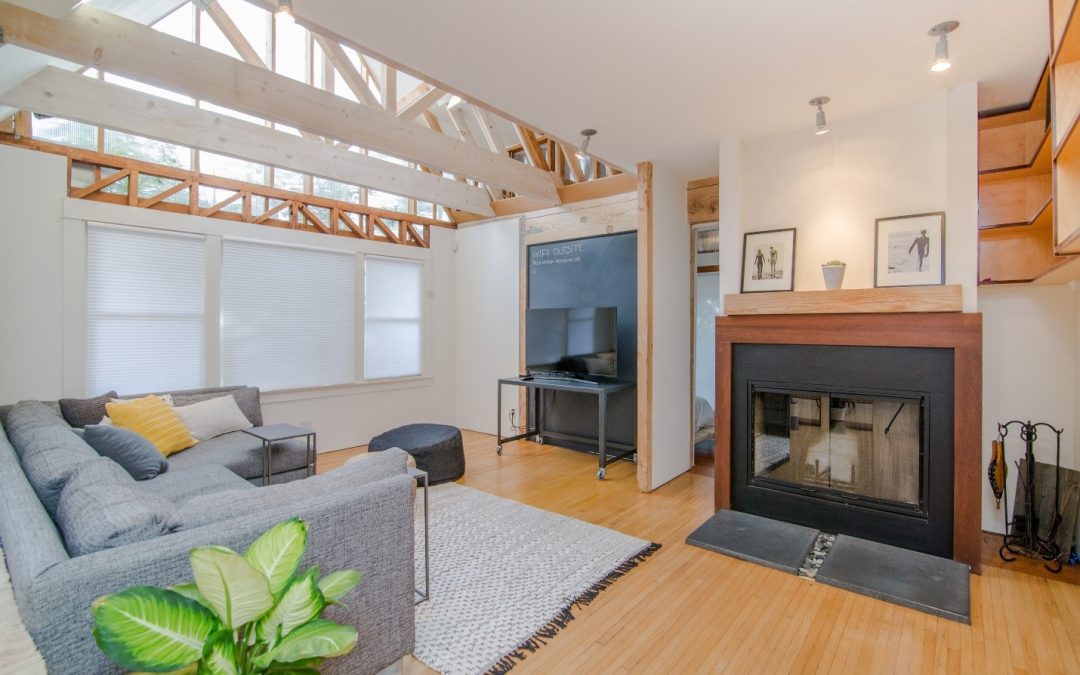When it comes to finding the right home, a lot of consideration goes into the size and layout of a home. From the number of bedrooms and bathrooms to the optimum square footage, homes come in a wide variety of configurations, and finding the right one isn’t always easy. Even when you do find a home that meets your needs, there may come a day in the future when you begin to feel like that space is starting to seem a little sparse.
If you’re not ready for the commitment of finding and moving into a larger home or beginning the long and costly process of building an addition or thoroughly renovating your home, there are still plenty of ways you can make your home look and feel larger, all while making your home a nicer place to live. Don’t settle for long-term solutions to a challenge that needs to be resolved as soon as possible- more space might not be as hard to find as you think!
- Cut out Clutter: When it comes to making your home feel more spacious, there are two approaches: giving your home the appearance of being larger, and cutting down on the amount of used space. Saying goodbye to unneeded clutter throughout your home accomplishes both, giving you back valuable space and helping cut down on that overcrowded look that might be plaguing your home. While there’s no need to embrace the entirety of minimalism, the basic principles are a great place to start. The less stuff you have taking up your available space, the more room you’ll have to get creative with layouts, sight-lines, carefully curated décor, and more!
- Find the Right Furniture: Look around your house and realize that most of your floor space is dominated by furniture. In the same way getting rid of clutter opened up more open space in your home, making changes to your furniture can have a large impact, too. Start by getting rid of furniture you don’t use frequently. For furniture that doesn’t get used, consider replacing it with something smaller. For example, while overstuffed couches may be super comfortable, they may be taking up more space than they’re worth. Consider finding a smaller sofa and adding a few cozy blankets and pillows to make it equally comfortable, while also taking up less floor space. When you can’t get rid of furniture, such as your bed, make sure you’re taking advantage of all your options with it: the space under your bed is perfect for storage, giving you more use out of that same space.
- Adjust your layout: While changing your home’s floor plan is a more drastic change that may require renovation, rearranging the layout of your furniture is much easier. When doing this, think about the flow of your space. You should always be able to easily move through your home, without needing to squeeze or turn to the side to fit between furniture pieces. While choosing a layout that works for you, consider other easy changes that can help open up a room. For example, avoid tall furniture pieces that can block your view, light, and airflow in a room. You can also change some other details of your home, such as doors. Your typical swing-open door requires a fair bit of space to open and close. Consider replacing it with a sliding door that stays flush with the wall. If you’re feeling particularly adventurous, consider removing a door between two rooms to help combine the spaces- without the need to knock down walls. You can install a curtain rod to help provide privacy and separation between the two spaces when needed, while allowing that open feel the rest of the time.
- Light it Up: If you want a space to feel open and airy, one of the best ways to accomplish this is with lighting. Windows are one of your best friends in this regard, allowing in natural light, while also giving a view into the world outside. Avoid dark colored or heavy curtains, and choose thinner, or possibly even sheer, materials that will help allow light to pass through, even with the curtains closed. For those times that you can’t rely on natural lighting, be sure to install good fixtures with LED bulbs, to help keep your space well-lit. Lighting itself isn’t the only way to lighten a space, however. Painting the walls or furniture in bright, neutral shades of white, beige or gray can also help maximize your existing lighting in a space. While dark colors may be cozy and intimate, they will make a space feel smaller while absorbing any available light. You can reupholster seating surfaces, or make use of covers, blankets or pillows to give your couch or bed an inexpensive makeover.
- Decorate with Care: Now that you’ve gotten the basics down, it’s time to actually decorate your home- from hanging pictures to choosing what and where you want to display things. The key is to absolutely avoid anything that could make your space begin to feel cluttered. Keep in mind the proportions of your room and what you’re attempting to display. For example, if you have several large photos or paintings you’d like to display, spread them out throughout your home, instead of bunching them up onto a single wall. Look for opportunities where you can create and enhance visual focal points in a room. In the dining room, for example, your focal point should be the table itself- so make it look its best! Use décor elsewhere in the room to compliment the table by helping draw attention to it. Mirrors are a good way to help amplify light, while also giving the visual illusion of a larger space.
If you are beginning to feel a little crowded in your space and are not quite ready to move someplace new, putting these tips into play will transform your current space allowing to work better for your needs for now.


